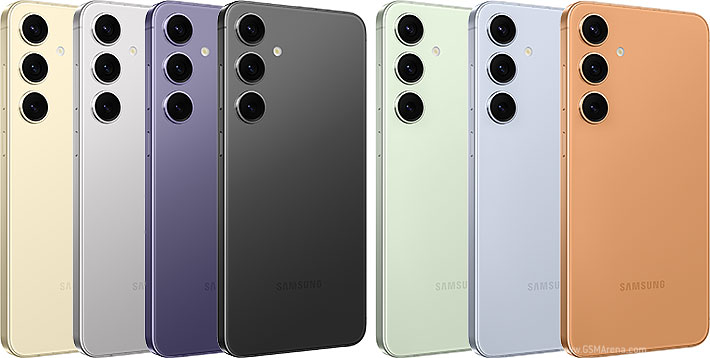In a world where top-of-the-line smartphones usually measure anywhere around 6.8 to 6.9 inches, compact smartphones that pack all the bells and whistles are increasingly becoming a rarity. Enter the Asus Zenphone line and the vanilla version of the S24 series. While the Zenphone, currently in its 10th iteration (?), is a flagship killer, the Samsung S24 makes no such pretensions—this is a flagship; a feature-laden premium device that offers the best technology available from Samsung. How much does it deviate from its bigger sibling, and what compromises did Samsung make to miniaturize the S24 Ultra?
- Screen
This, and by extension, size, is the primary difference between the S24 trio. The awe-inspiring S24 Ultra has a 6.8-inch display with a respectable 88.5% screen-to-body ratio. The S24+, slightly smaller with a 6.7-inch display, boasts a more impressive 91.6% screen-to-body ratio and a significantly higher 513 pixel-per-inch (PPI) density. The two devices also sport QHD screens. The S24, the baby of the house, has a modest 6.2-inch FHD screen with a relatively lower 416 PPI. Interestingly, the three devices use the same screen technology: a 120Hz dynamic LTPO 2X AMOLED screen. These screens can refresh as high as 120Hz and as low as 1Hz, depending on the content being displayed.
With the S24, you will miss out on a QHD screen, which might be a plus for some because a lower resolution, by default, means better battery life (more on that later). For those with smaller hands, the S24 is a great device. You will benefit from a tested and trusted Corning Gorilla Glass Victus 2 (the top-of-the-line, Armor is exclusively for the Ultra this year).
- Performance
As far as performance is concerned, all fingers are equal here. All the S24 series have the same processor, a custom-made (reads overclocked) Qualcomm Snapdragon 8 Gen 3 processor. In the Android world, this is the greatest of the greatest and will be the processor of choice for the majority of flagship devices this year. Early benchmark results suggest this might even be a faster processor than Apple’s Bionic A17 processor in the iPhone 15 Pro and 15 Pro Max. Interestingly, the Samsung S24 will theoretically get better gaming performance because of its slightly lower resolution. Regardless, this is a phone that is future-proofed. In 3-5 years, it will still be purring efficiently—Samsung, oh, purr!
- Camera
Every smartphone enthusiast knows that cameras are the biggest feature of any new release. Well, the S24+ and the S24 have the same camera setup: 50 MP, f/1.8, 24mm (wide), 1/1.56″, 1.0µm, Dual Pixel PDAF, OIS, 10 MP, f/2.4, 67mm (telephoto), 1/3.94″, 1.0µm, PDAF, OIS, 3x optical zoom, 12 MP, f/2.2, 13mm, 120˚ (ultrawide), a triple-camera system that differentiates them from the quad-camera setup of the S24 Ultra (with a different primary lens and a 5X optical zoom lens). Make no mistake; this is a flagship camera, and you will have no regrets whatsoever. It will perform in both good light and challenging light situations.
- Battery
Small but mighty will be the appropriate moniker for the S24. Of the three phones, the S24 has the smallest battery capacity with its 4000 mAh battery. But with the efficiency of the Snapdragon 8 Gen 3 and the smaller screen on the S24, a full day’s usage is more than guaranteed.
- Other Features
The headlining feature of the S24 series is the Galaxy AI, and it is available on all three. You can use the same Generative AI, circle to search, and real-time translation on all phones. You are not missing out on most of the goodies, and the best part is the S24 is the cheapest of the three. What you will lose in extra screen real estate, resolution, and the main camera sensor, you will gain in an inexpensive yet capable and easy-to-use smartphone. If you have a small palm, the boxy and gigantic frame of the S24 Ultra might not be your cup of tea.
Is the S24 a device you might consider? Is there anything you wished it had? Tell us in the comment section.
comment section




